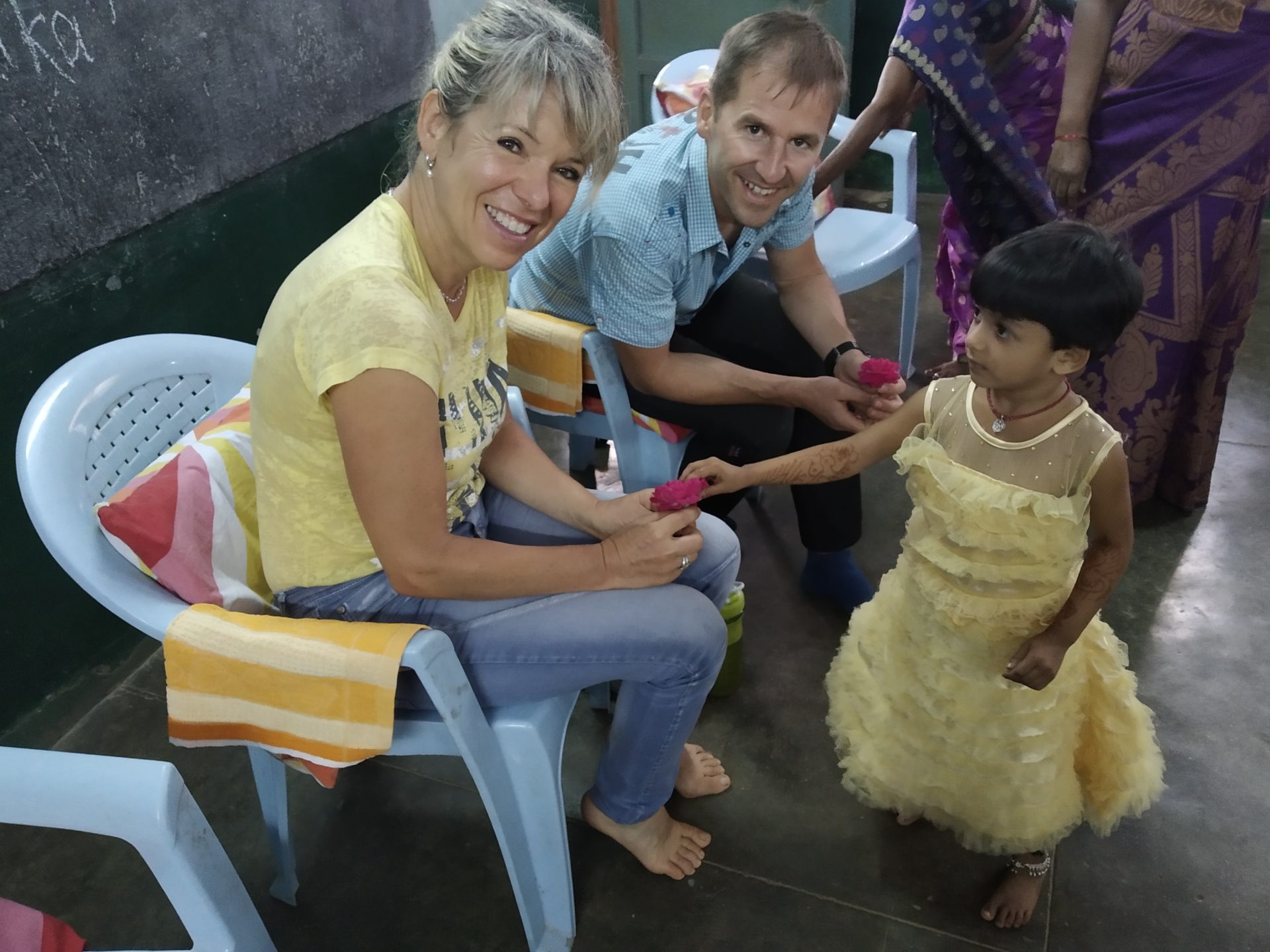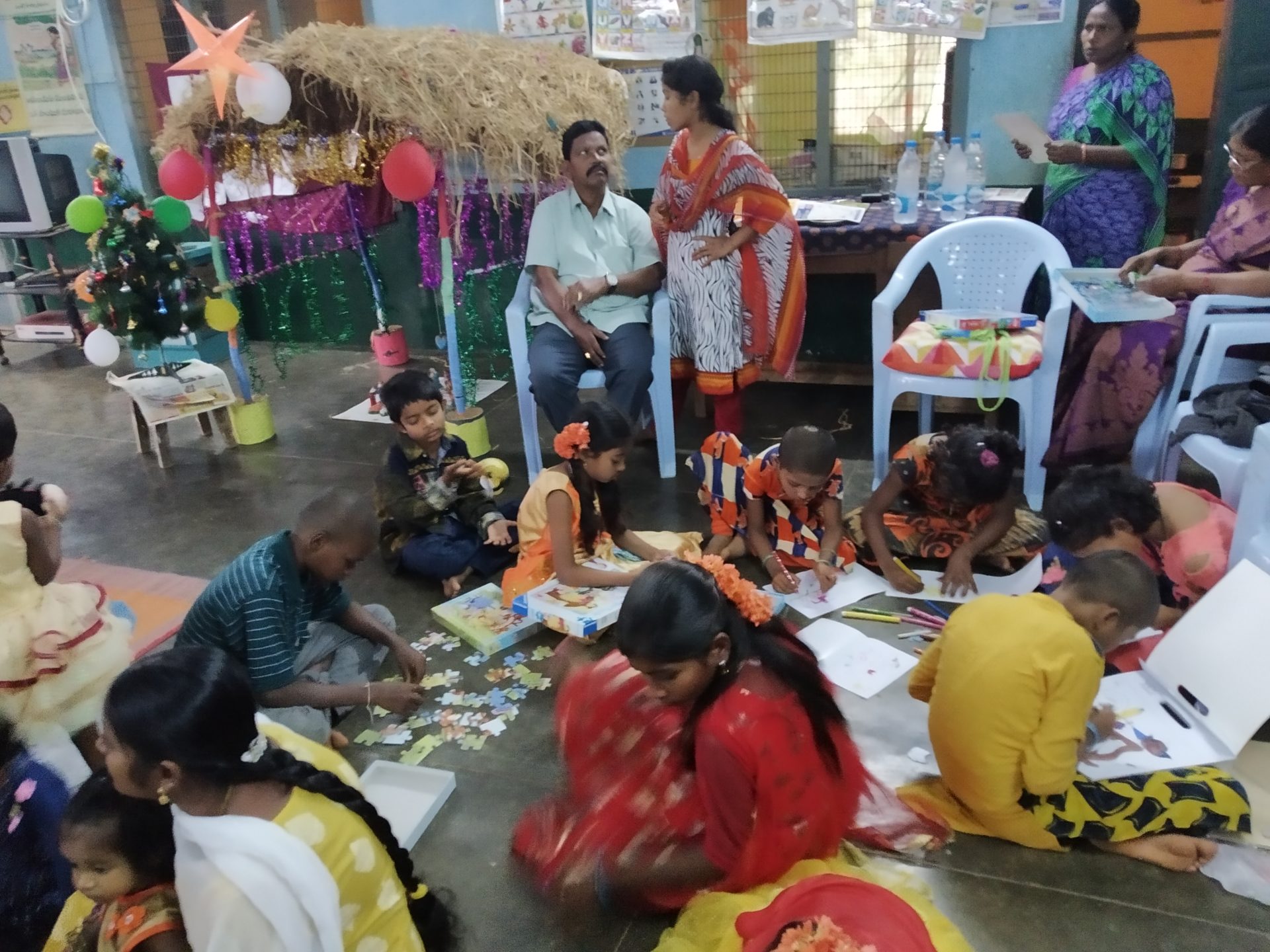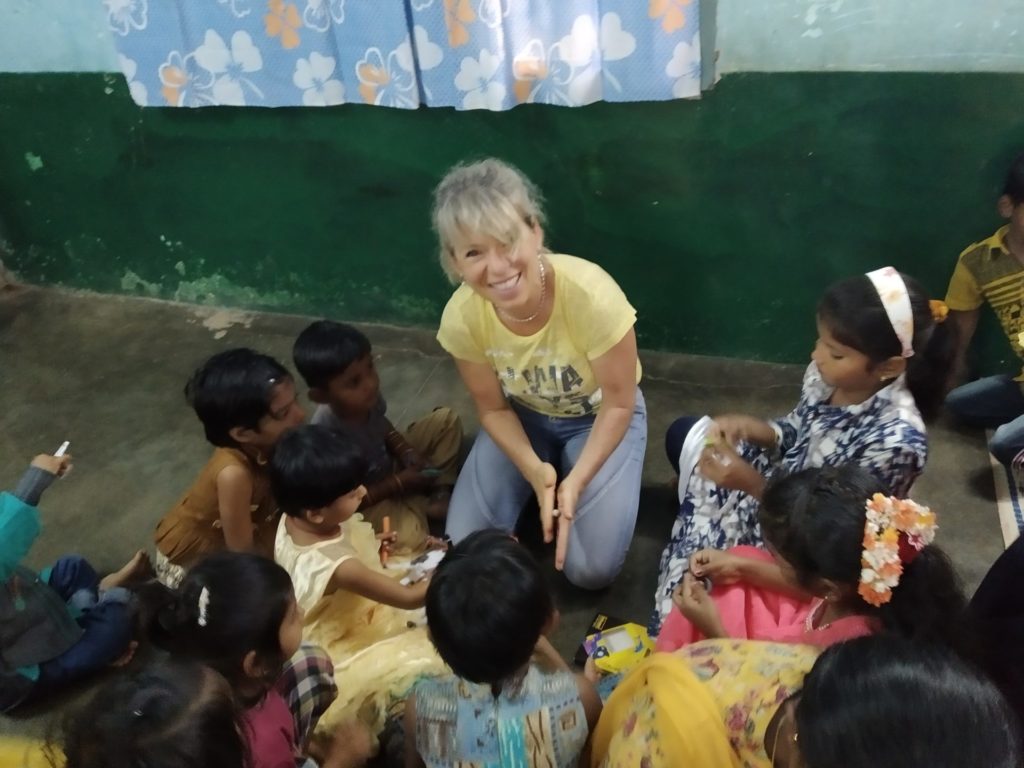
My guests Sabine and Daniel not only booked the Kerala-Active-Trip in January with me, but also had a very special request. They wanted to visit an aid project in India, which also supports their Indian godchild Geethika.
Sabine has been providing financial support to Indian aid organisations through the German “Kinder Nothilfe” for 12 years. Geethika is now Sabine’s third godchild, who has the opportunity to be cared for in a day centre through her monthly donation. Here, children between the ages of 3 and 12 receive education, care and meals.

The so-called Child Care Center, is supported exclusively by financial resources of the ” Kinder Nothilfe” and with German sponsors.
It is located in Dornakal, an insignificant village in the middle of the rural state of Telangana, consisting of poor wage workers. Only a railway station and the diocese of Dornakal of the “South Indian Church” (CSI) give the place something in importance. In fact, the Diocese of Dornakal plays a greater role in Indian Christianity and it is also the South Indian Church, under whose patronage the Children’s Aid Project in Dornakal is.

When Sabine and Danile asked me to organize the trip to the project and to accompany them, I didn’t have all the above information. Sabine could only give me the place Dornakal and the name CSI and that the donations of course went through the children’s emergency aid.
Well, I was happy to even find a place called Dornakal in India. On the map on Google Maps it was 220 km from Hydarabad, the capital of the state of Telangana.
But I couldn’t find any information about a relief project in the World Wide Net, so I was glad when a child emergency worker finally came back from her holiday and got me in touch with the Indian colleagues of the CSI.
The Children’s Emergency Service supports the donors in visiting their godchildren, you only have to sign a document with your personal data and send it back to the organization.

Now I was also in contact with the Indian Project Staff and was glad that the existence of the project and the place Dornakal had been confirmed to me. Now only flights to Hydarabad, trains to and from Dornakal and accommodation in Khamman, the next major city of Dornakal, had to be booked.
Neither Dornakal nor Khamman nor actually Hydarabad are not on the normal route for Indian tourists and even I have never been to this area before. India is simply too big, and if you look at the Indian map, you can quickly see that the state of Telangana, compared to other Indian regions, does not excel with historical, cultural or scenic charms, but rather is a somewhat rural and undeveloped area with few villages.

When we arrived in Khamman, we didn’t expect any more foreigners. Who should get lost here? And in fact, the reaction of people showed that white faces are rather rare here. Everyone looked at us with even greater curiosity than is already the case in India.

But surprisingly we met two Russians. They were no less surprised to meet other foreigners and told us that they were here because of their granite business. It later emerged that the area was a large granite mining area.
I was positively surprised at how smoothly my plan worked in practice. Normally in India I am always prepared for unplanned surprises. But everything from the flight to our short stay in Hydarabad (here of course the famous Hydarabadi Biriyani, a rice dish had to be tried), the train ride and the check-in at the hotel worked smoothly.

The next morning we took a taxi to Dornakal, 40 km away.
Here we should attend a divine service for the annual Harvest Thanksgiving Festival, which is organized once a year by the South Indian Church.
So we not only met the bishop, but also visited the magnificent cathedral. In front of the cathedral there were a few stalls with Indian treats, through which Daniel politely tried his hand. We did not attend the divine service itself for too long. We wanted to visit the day center.

Normally the center is closed on Sunday, but for us the management made an exception and invited all the children to a relaxing day in the center.

55 children between the ages of 3 and 12 are cared for here.
The children greeted us warmly in their best festive clothes and performed dances and songs to us.

We then distributed the souvenirs from Germany. Sabine and Daniel had collected games in Germany and many German children had given their puzzles, games, cuddly toys and pens to India. It became a huge fun and soon the initially shy children became open-minded players.

After a lunch together, we all visited Geethika’s family together in their home. It became a special event for the entire village community.

Most of the villagers belong to ethnic groups, who have now settled here and work as day laborers for about 3 to 5 Euros a day, especially in the surrounding cotton and chilli fields.

Hygienic standards, education, inadequate women’s rights and poverty are the biggest problems here and the day centre tries to provide education in the form of workshops and programmes.

The next day we paid another visit to the centre to bring along necessary kitchen utensils and other small gifts for the children.
Then it was time to say goodbye and make a long journey back home.

By the way, Daniel and Sabine were the first donors to visit the project. The visit has provided a lot of fun and hope for the children and the whole village community and has given people a new shine in their eyes.

It is not easy to visit a project in India, especially when it is as remote as the aid project in Dornakal. But with a lot of energy it is certainly possible. Sabine and Daniel proved that.






